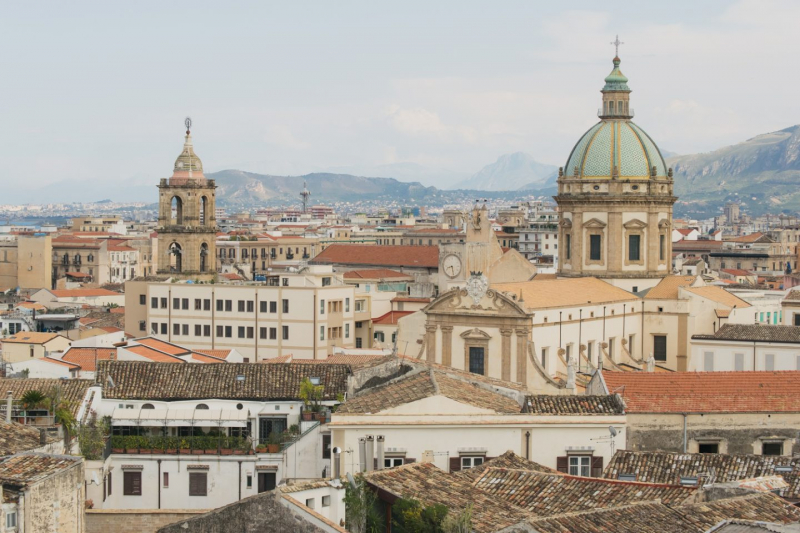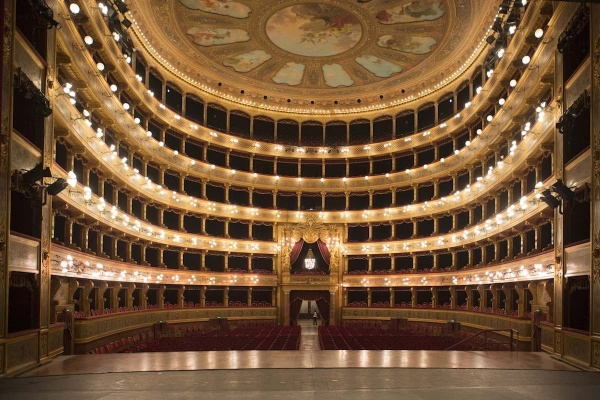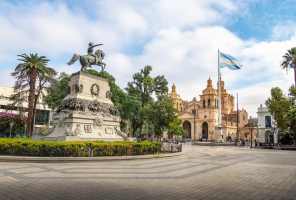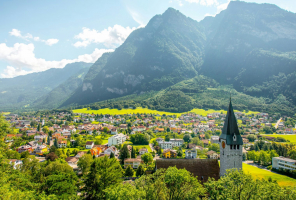Top 8 Reasons to Visit Palermo
Palermo, the capital of Sicily is the perfect place to begin an exploration of the island. A melting pot of cultures, from Norman to Moorish passing by Spanish ... read more...and Ancient Greek, Sicily is one of the most picturesque and diverse regions of Italy. The stunning natural beauty, as well as the architecture and delicious food, will charm any tourist. One visit to Sicily alone is not enough, but when you do visit, make sure to start from Palermo. Here are the top reasons to visit Palermo
-
In actuality, Palermo can be a very lovely city to explore, especially in and around its historic district. Palermo is a city with a variety of architectural styles. The incredible Quattro Canti crossing, which unites the city's four historic districts, a Gothic cathedral with Mauritanian embellishments, and a number of churches and chapels whose exteriors and interiors will astound you are all nearby. The roofs of many ancient buildings in Palermo are open to visitors, and the views there are quite breathtaking. You should also go to Italy's largest opera house, which many people think is the city's most stunning structure. Baroque through Classical styles are displayed at Teatro Massimo. The Capuchin Catacombs, a fascinating sight in Palermo, should not be missed.
The old town of Palermo is rife with grand palaces and elegant corners that are quite impressive even if they show signs of wear and tear. You need only look to the well-trodden junction at Quattro Canti to see the city’s charms. On each corner of this confined square, you have Baroque fountains and statues that create an instantly memorable attraction.
It’s actually useful to use Quattro Canti as a point of reference when sightseeing because you’ll find plenty of refined buildings and squares all around the intersection. In fact, just behind the square, you have the stunning Fontana Pretoria and several palaces all with character and style.
Brianna Cariola 
Adobe Stock -
The largest city in Sicily and one of the biggest in Italy is Palermo. The other is that Palermo is a rather simple city to get around in. In fact, you may stroll through the city's old district with relative ease.
Two streets that converge in the city's historic core are mostly responsible for this walkability. Great long pedestrian avenues Via Maqueda and Via Vittorio Emanuele intersect at Quattro Canti, the square mentioned before. These two streets connect several of the major Palermo attractions like a freeway for tourists. Although they are no longer pedestrian-only at those locations, they also pass past Palermo Central Station and the port.
These aren’t the only streets tourists should explore mind you. You should wander around and see the backstreets, especially those in the Kalsa neighborhood. The point is that you’ll definitely become quite familiar with Via Maqueda and Via Vittorio Emanuele during a visit here. If you’re not feeling too confident exploring on your own, consider doing a walking tour to settle in, whether it be a food tour or a cultural tour.

Globalmouse Travels 
Travelsewhere -
Visitors to Palermo will find two cathedrals to be of interest. Both are popular tourist destinations in Palermo and are largely regarded as some of the most significant in all of Sicily.
The Palermo Cathedral, the city's most significant house of religion, comes first. While Palermo Cathedral's scale is unquestionably notable, it's difficult to avoid noticing the structure's unique appearance. Since the Normans began building it in 1185, it has undergone numerous additions, blending a variety of architectural styles. However, the Norman, Moorish, Gothic, and Baroque external features work wonderfully together.
The inside is a little less monumental, but don’t miss the Sundial Meridian Line decorated with the zodiac. This ingenious addition from 1801 uses a narrow hole to cast light on the meridian, indicating the exact time of noon each day upon the current sign of the zodiac.
The Monreale Cathedral is the other cathedral tied to Palermo, even if it lies outside the city limits. This famous attraction sits in the small town of Monreale in the hills west of the city and actually predates Palermo Cathedral. There is a story behind Monreale Cathedral, it is said to have been deliberately built by King William II in Monreale to oppose the bishop of Palermo.
Wikipedia 
Italy This Way -
There are amazing markets all across Palermo to explore, including flea markets, food markets, and loud markets. For instance, in Ballar, the mother of all culinary markets, you could see CD hawkers blasting dance music from massive speakers mounted to their stands as stall owners call out their best discounts for the day.
Every market is unique in its own way. You may buy tomatoes still on the vine, cheese on wheels, and kiosks with enormous swordfish and tuna steaks with heads on them at Capo, Palermo's most famous food market. Here in the early morning, large crates of fresh squid and men cleaning fresh sardines are regular sights.
Visit La Vucciria if you're up for a night of cheap beers and crunchy, battered food with the locals. Eat fried calamari, battered eggplant, or arancini while dancing to house music (a saffron rice ball filled with meat or cheese).
Don't miss the flea markets if discovering antique treasures is more your style. These include the stores along Mercato delle Pulci, next to the cathedral, and the Sunday flea market in Piazza Marina, where you can buy everything from antique furniture to comic books and vintage records.
Summer In Italy 
The Times -
The charming Opera dei Pupi theater productions, which have roots in the first half of the 13th century, are still being performed in theaters all across Palermo. They portray the battles of Spanish and French soldiers against dragons, devils, and other characters, frequently narrating stories from the Crusades, using the original Italian accent and traditionally handcrafted string puppets.
The puppeteers control the puppets' amazing movements, such as walking and wielding swords. Puppets also experience the brutal results of their struggles; during the conflict, they may lose their heads or appear to have split in half from head to toe.
Originally played in piazzas, the Opera dei Pupi was a popular form of entertainment for the working classes of the city until it was forcibly moved inside buildings in the middle of the 19th century.
Opera dei Pupi is now regarded as being so significant to Palermo that it has been added to UNESCO's list of "Oral and Intangible Cultural Heritage of Humanity." With puppets from China, Nigeria, and Spain as well as occasionally hosting performances by puppeteering families in need of a stage, the International Puppet Museum Antonio Pasqualino contributes significantly to the preservation of that history and the education of locals, kids, and tourists. Also around the cathedral, in family-run theaters like Teatro Argento, you may see comedic battle-themed performances.
Wikipedia 
Bagliori di Sicilia -
Arabs, Romans, and Byzantines introduced palaces to this region throughout the past two millennia in addition to new ingredients and recipes. Every region of Sicily offers a distinctive flavor, and Palermo, the island's capital, serves as a gathering place for the different ingredients and dishes.
Pasta con le sarde is one of Palermo's most well-known meals (spaghetti or other pasta with sardines, wild fennel, saffron and raisins). The different types of couscous are also clearly influenced by North African cuisine. For residents of Palermo, sorbet-like granita served with brioche is a favorite memory of a summertime breakfast or dessert.
The smell of pastries will lead you into family-owned shops, like Pasticcería Fratelli Magri where the king (cannoli – a fritter filled with ricotta cheese and chocolate pieces) and queen (Cassata Siciliana – a ricotta, sugar and marzipan-based cake with fruit and liquor) of Sicily are made from scratch. Both desserts were originally introduced by the Arabs but adapted by the nuns who arrived with the Spanish.
Any visit to Palermo requires a stop (or two) for gelato. The third-generation family shop Antica Gelatería Ilardo, by the marina, is a great option to try gelato made with real pistachio nuts.
Authentic Food Quest 
Manu's Menu -
There are numerous attractions in Palermo, but if you want to unwind, travel outside the city to Mondello, a little seaside village accessible by bus. The expansive beach, which is surrounded by pastel-colored changing rooms, is the ideal getaway from the bustle of the city center. View the Art Nouveau-style "Charleston," which is now a restaurant and private beach on the pier, as you stroll through opulent Liberty-style homes along the coast.
The 150km of coastline that Palermo's province is surrounded by can be explored in the summer to take in the clifftop scenery and go snorkeling. Due to the atmosphere there, many people like Mondello beach. When you’re not tanning under the sun, get a refreshing drink at one of the many bars. Then head into the sea for a splash.
Mondello with its palm trees, fine sand, and clear sea is a feast for the eyes. Ideal for unforgettable experiences of snorkeling and archaeo-diving is the island of Ustica. Cefalù is the second most important resort after Taormina, with its clear water and its remarkable cultural heritage that can surprise and enchant you.
Live in Italy Magazine 
SopranoVillas -
The Teatro Massimo Vittorio Emanuele, the largest opera theatre in Italy and one of the biggest in Europe, is situated in Piazza Verdi in Palermo. In order to support Italy's 1861 unification, it was constructed in 1864. The theater, which was built in the late Renaissance style and was intended to hold 3,000 people, now seats 1,350. It is formed like a horseshoe and has seven tiers of boxes rising above an inclined stage. The third largest opera house was finally finished in May 1897, 22 years after the foundation stone was laid. Leopoldo Mugnone conducted a performance of Verdi's Falstaff to celebrate the theater's opening. On a pop culture note, the final scenes of the film The Godfather Part III were filmed at the theatre.
You should drink in the atmosphere at Italy’s largest opera house, a grand affair. Built-in the Neoclassical style in the late 19th century, the building subsequently underwent a lengthy restoration, completed in May 1997. Book a guided tour to check out the seven-tiered grand auditorium with its gilt balconies and glittering chandeliers or, for the ultimate experience, experience the real thing at an evening performance.

We Are Palermo 
Shen Yun




























